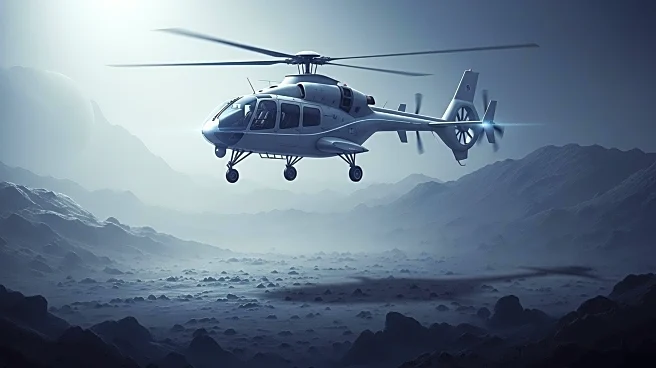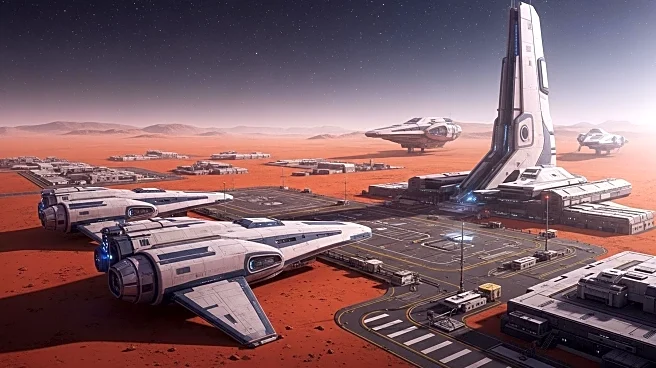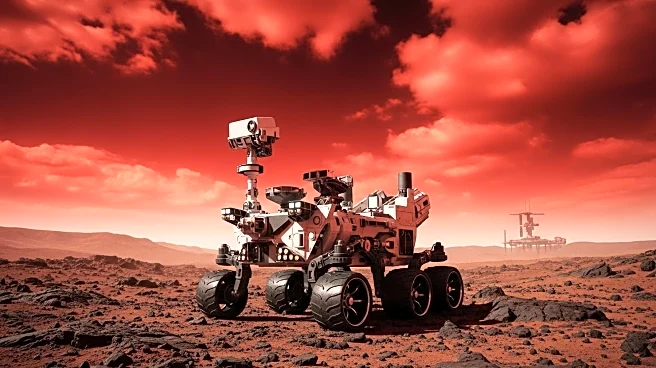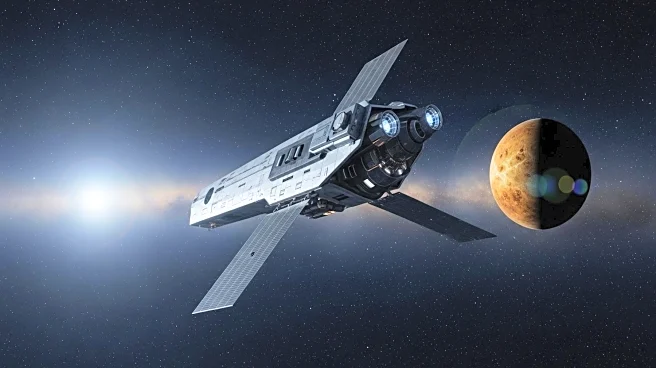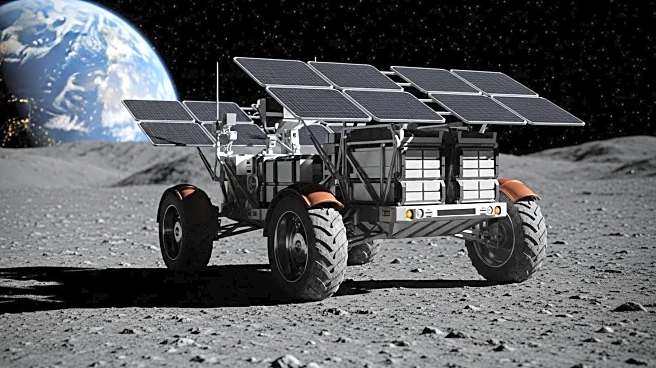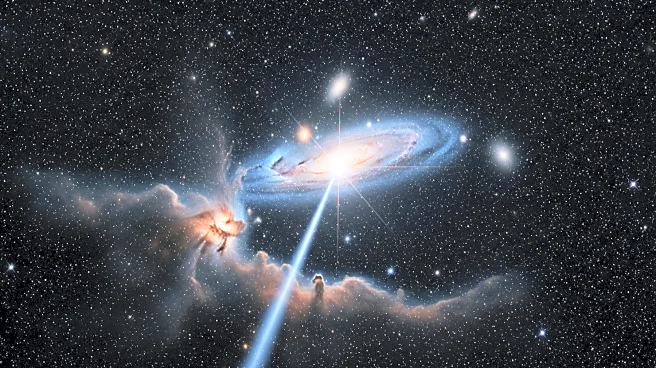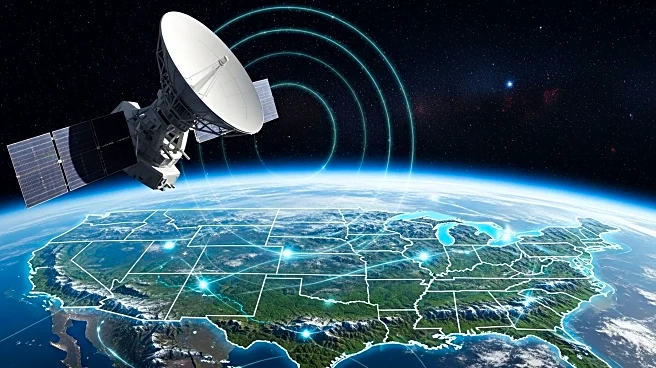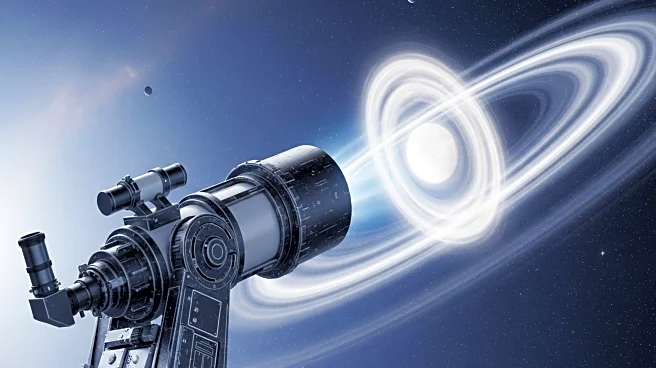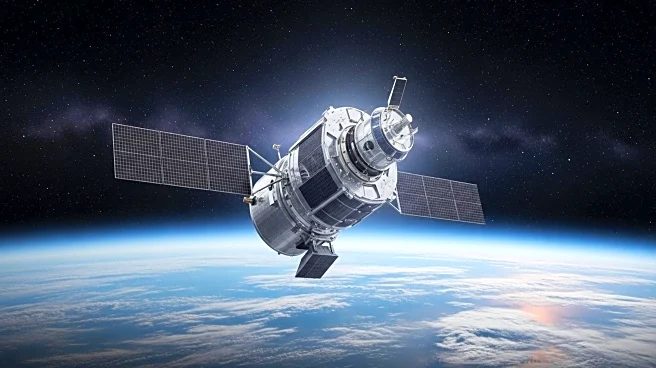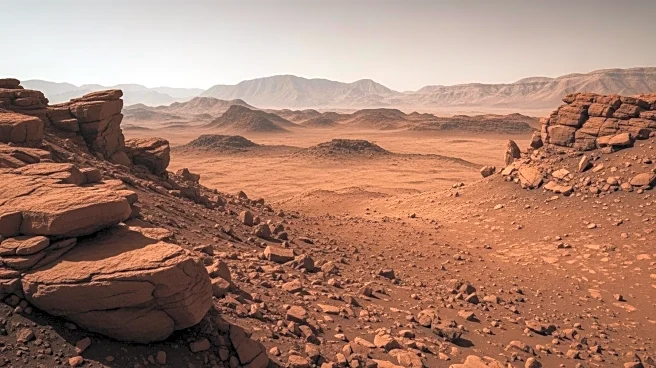What is the story about?
What's Happening?
NASA is preparing to launch the Dragonfly mission, a pioneering rotorcraft designed to explore Saturn's moon Titan. The Dragonfly rotorcraft will fly to various locations on Titan, leveraging the moon's dense atmosphere and low gravity to travel efficiently across its surface. The mission aims to investigate Titan's habitability by covering approximately 70 miles from its initial landing site over a three-year period. Dragonfly will be powered by a Multi-Mission Radioisotope Thermoelectric Generator (MMRTG), enabling it to operate in Titan's low solar illumination environment. The rotorcraft is equipped with scientific instruments to analyze chemical components, measure elemental surface composition, and monitor atmospheric conditions. The mission represents a significant advancement in space exploration technology, allowing for detailed study of Titan's surface and atmosphere.
Why It's Important?
The Dragonfly mission is crucial for understanding the potential habitability of Titan, which is considered one of the most Earth-like bodies in the solar system. By exploring Titan's surface and atmosphere, NASA aims to gather data that could provide insights into the moon's chemical processes and potential for supporting life. The mission also demonstrates the capabilities of rotorcraft technology in space exploration, offering a new method for traversing extraterrestrial terrains. This could pave the way for future missions to other celestial bodies with similar atmospheric conditions. The use of MMRTG for power highlights the importance of nuclear energy in enabling long-duration missions in environments where solar power is insufficient.
What's Next?
Following its launch, Dragonfly will undergo a complex entry, descent, and landing process to safely reach Titan's surface. Once operational, the rotorcraft will begin its exploration, collecting samples and data from various sites. The mission's findings could influence future exploration strategies and the development of technologies for studying other moons and planets. NASA's collaboration with international partners and commercial space companies in developing Dragonfly's scientific instruments underscores the growing trend of global cooperation in space exploration.
Beyond the Headlines
Dragonfly's mission to Titan could have broader implications for understanding the origins of life and the conditions necessary for its development. The data collected may offer clues about the chemical processes that could lead to life, informing theories about life's potential existence beyond Earth. Additionally, the mission's success could inspire further investment in rotorcraft technology for space exploration, expanding the possibilities for studying diverse planetary environments.
AI Generated Content
Do you find this article useful?
